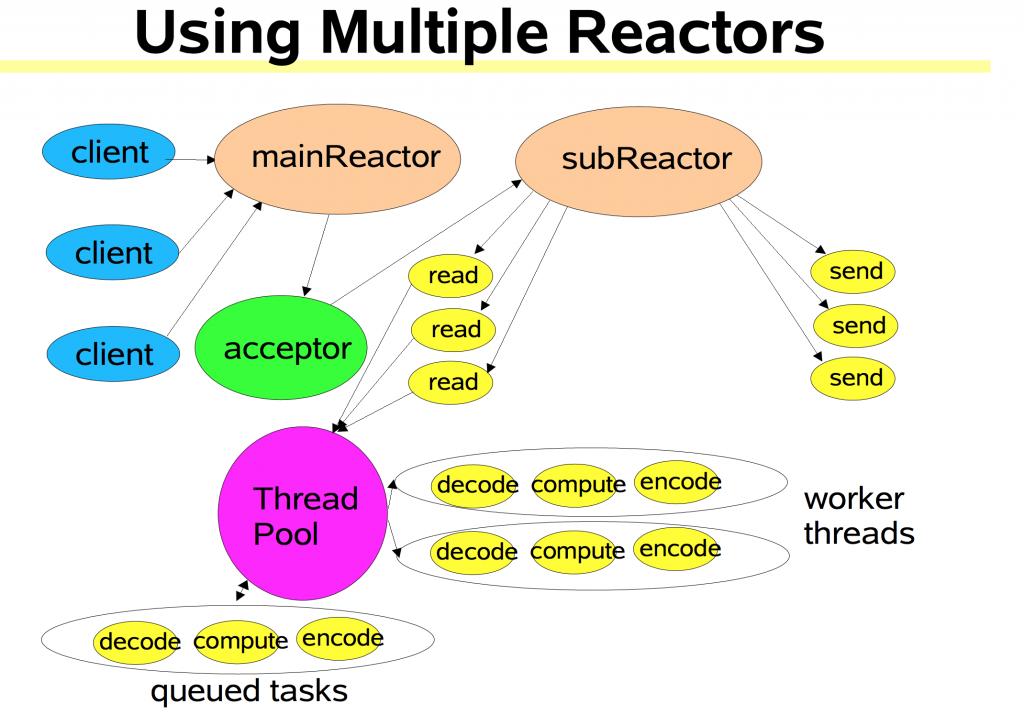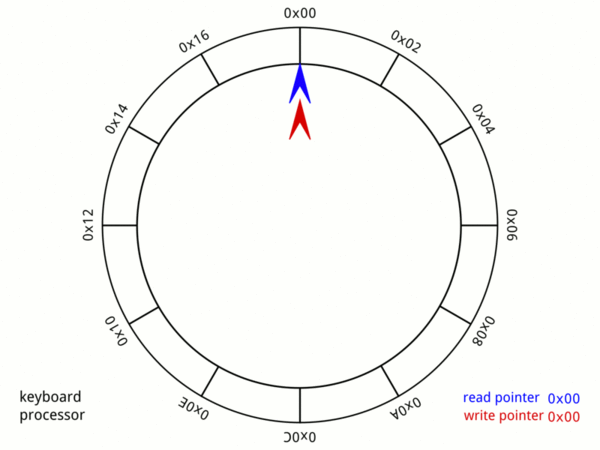[中文]
gnet is an Event-Loop networking framework that is fast and small. It makes direct epoll and kqueue syscalls rather than using the standard Go net package, and works in a similar manner as libuv and libevent.
The goal of this project is to create a server framework for Go that performs on par with Redis and Haproxy for packet handling.
gnet sells itself as a high-performance, lightweight, nonblocking network library written in pure Go which works on transport layer with TCP/UDP/Unix-Socket protocols, so it allows developers to implement their own protocols of application layer upon gnet for building diversified network applications, for instance, you get a HTTP Server or Web Framework if you implement HTTP protocol upon gnet while you have a Redis Server done with the implementation of Redis protocol upon gnet and so on.
gent derives from project evio while having higher performance.
Features
- High-performance Event-Loop under multi-threads/goroutines model
- Built-in load balancing algorithm: Round-Robin
- Concise APIs
- Efficient memory usage: Ring-Buffer
- Supporting multiple protocols: TCP, UDP, and Unix Sockets
- Supporting two event-notification mechanisms: epoll in Linux and kqueue in FreeBSD
- Supporting asynchronous write operation
- Allowing multiple network binding on the same Event-Loop
- Flexible ticker event
- SO_REUSEPORT socket option
Key Designs
Multiple-Threads/Goroutines Model
gnet redesigns and implements a new built-in multiple-threads/goroutines model: 『Multiple Reactors』 which is also the default multiple-threads model of netty, Here’s the schematic diagram:

and it works as the following sequence diagram:

The subsequent multiple-threads/goroutines model of gnet: 『Multiple Reactors with thread/goroutine pool』is under development and about to be delivered soon, the architecture diagram of new model is in here:

and it works as the following sequence diagram:

Communication Mechanism
gnet builds its 『Multiple Reactors』Model under Goroutines in Golang, one Reactor per Goroutine, so there is a critical requirement handling extremely large amounts of messages between Goroutines in this networking model of gnet, which means gnet needs a efficient communication mechanism between Goroutines. I choose a tricky solution of Disruptor(Ring-Buffer) which provides a higher performance of messages dispatching in networking, instead of the recommended pattern: CSP(Channel) under Golang-Best-Practices.
That is why I finally settle on go-disruptor: the Golang port of the LMAX Disruptor(a high performance inter-thread messaging library).
Auto-scaling Ring Buffer
gnet leverages Ring-Buffer to cache TCP streams and manage memory cache in networking.

Getting Started
Installation
$ go get -u github.com/panjf2000/gnet
Usage
It is easy to create a network server with gnet. All you have to do is just register your events to gnet.Events and pass it to the gnet.Serve function along with the binding address(es). Each connections is represented as an gnet.Conn object that is passed to various events to differentiate the clients. At any point you can close a client or shutdown the server by return a Close or Shutdown action from an event.
The simplest example to get you started playing with gnet would be the echo server. So here you are, a simplest echo server upon gnet that is litsening on port 9000:
package main
import (
"log"
"github.com/panjf2000/gnet"
"github.com/panjf2000/gnet/ringbuffer"
)
func main() {
var events gnet.Events
events.Multicore = true
events.React = func(c gnet.Conn, inBuf *ringbuffer.RingBuffer) (out []byte, action gnet.Action) {
top, tail := inBuf.PreReadAll()
out = append(top, tail...)
inBuf.Reset()
return
}
log.Fatal(gnet.Serve(events, "tcp://:9000"))
}
As you can see, this example of echo server only sets up the React function where you commonly write your main business code and it will be invoked once the server receives input data from a client. The output data will be then sent back to that client by assigning the out variable and return it after your business code finish processing data(in this case, it just echo the data back).
I/O Events
Current supported I/O events in gnet:
OnInitCompleteis activated when the server is ready to accept new connections.OnOpenedis activated when a connection has opened.OnClosedis activated when a connection has closed.OnDetachedis activated when a connection has been detached using theDetachreturn action.Reactis activated when the server receives new data from a connection.Tickis activated immediately after the server starts and will fire again after a specified interval.PreWriteis activated just before any data is written to any client socket.
Multiple addresses
// Binding both TCP and Unix-Socket to one gnet server.
gnet.Serve(events, "tcp://:9000", "unix://socket")
Ticker
The Tick event fires ticks at a specified interval.
The first tick fires immediately after the Serving events.
events.Tick = func() (delay time.Duration, action Action){
log.Printf("tick")
delay = time.Second
return
}
UDP
The Serve function can bind to UDP addresses.
- All incoming and outgoing packets will not be buffered but sent individually.
- The
OnOpenedandOnClosedevents are not availble for UDP sockets, only theReactevent.
Multi-threads
The Events.Multicore indicates whether the server will be effectively created with multi-cores, if so, then you must take care with synchonizing memory between all event callbacks, otherwise, it will run the server with single thread. The number of threads in the server will be automatically assigned to the value of runtime.NumCPU().
Load balancing
The current built-in load balancing algorithm in gnet is Round-Robin.
SO_REUSEPORT
Servers can utilize the SO_REUSEPORT option which allows multiple sockets on the same host to bind to the same port and the OS kernel takes care of the load balancing for you, it wakes one socket per accpet event coming to resolved the thundering herd.
Just provide reuseport=true to an address and you can enjoy this feature:
gnet.Serve(events, "tcp://:9000?reuseport=true"))
Performance
On Linux (epoll)
Test Environment
Go Version : go1.12.9 linux/amd64
OS : Ubuntu 18.04/x86_64
CPU : 8 Virtual CPUs
Memory : 16.0 GiB
Echo Server

HTTP Server

On FreeBSD (kqueue)
Test Environment
Go Version : go version go1.12.9 darwin/amd64
OS : macOS Mojave 10.14.6/x86_64
CPU : 4 CPUs
Memory : 8.0 GiB
Echo Server

HTTP Server

License
Source code in gnet is available under the MIT License.
Thanks
TODO
gnet is still under active development so the code and documentation will continue to be updated, if you are interested in gnet, please feel free to make your code contributions to it, also if you like gnet, give it a star ~~




